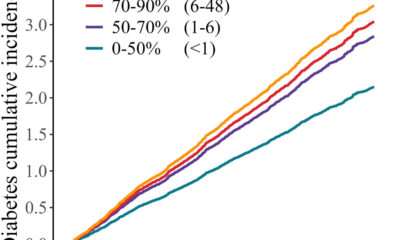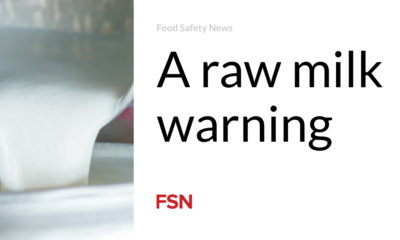Food
Researchers say food irradiation can reduce the number of foodborne illnesses

Research funded in part by the CDC has shown that food irradiation could reduce the number of foodborne outbreaks caused by pathogens.
For the project, researchers looked at 2,153 foodborne outbreaks caused by Campylobacter, Salmonella, E. coli or Listeria monocytogenes between 2009 and 2020. Of these, 482 contained information about processing methods other than unknown or missing values. None of these listed irradiation as a processing method.
A variety of foods sold in the United States are candidates for irradiation. Those foods include meat, poultry, fresh shell eggs, spices, some fruit and fresh produce. Of the 482 outbreaks, 155 were linked to food eligible for irradiation, and none were irradiated.
“Food irradiation has been studied worldwide for decades and is a safe, effective way to reduce foodborne pathogens, sterilize insects, delay ripening or sprouting, and extend shelf life,” the researchers said.
“The U.S. Food and Drug Administration has approved several foods for irradiation, including meat, poultry, fresh shelled eggs and spices. However, irradiation has not yet been widely used in the United States due to high fixed costs and the perception that consumers are unwilling to purchase irradiated food. Estimates of the amount of irradiated food available in the United States are scarce. Yet in 2010, about a third of spices consumed and less than 0.1 percent of imported fruits, vegetables and meat were irradiated.”
Of the 482 outbreaks where irradiation was not known to have occurred as part of the processing, 155 were related to a food that was a candidate for irradiation. These outbreaks resulted in 3,512 illnesses, 463 hospitalizations and 10 deaths. The most common sources were chicken with 52 outbreaks, beef with 31 and eggs with 29, accounting for 72 percent of outbreaks linked to irradiation-eligible foods, according to researchers.
“These results suggest that radiation could prevent or alleviate some outbreaks. “Prioritizing food irradiation, especially for chicken, beef and eggs, could significantly reduce outbreaks and illness,” researchers concluded.
“The illnesses, hospitalizations, and deaths associated with outbreaks associated with foods eligible for irradiation could have been prevented or reduced if these foods had been irradiated. Irradiation has been repeatedly proposed as a strategy to reduce foodborne illness. Irradiation generally eliminates a large proportion of pathogenic microorganisms.”
When irradiating food, no radiation is used that is perceived as radioactive and no radioactive charge remains in the food. When used in sufficient doses, it can neutralize Campylobacter, Salmonella, E.coli and Listeria monocytogenes, the major pathogens behind foodborne illness in the United States.
“Irradiation usually eliminates a large proportion of pathogenic microorganisms. The effectiveness of irradiation depends on factors such as temperature and water content. Food can become contaminated after irradiation. Irradiation can improve food safety, complementing existing food safety practices. Consumer demand for irradiated food can be increased through information,” the researchers said.
Dr. Marta Zlotnick, the project’s principal investigator, is an Oak Ridge Institute for Science and Education Fellow at the Centers for Disease Control and Prevention in Atlanta, GA. Her work focuses on preventing zoonotic diseases that arise from contact with food or animals.
(To sign up for a free subscription to Food Safety News,Click here)













